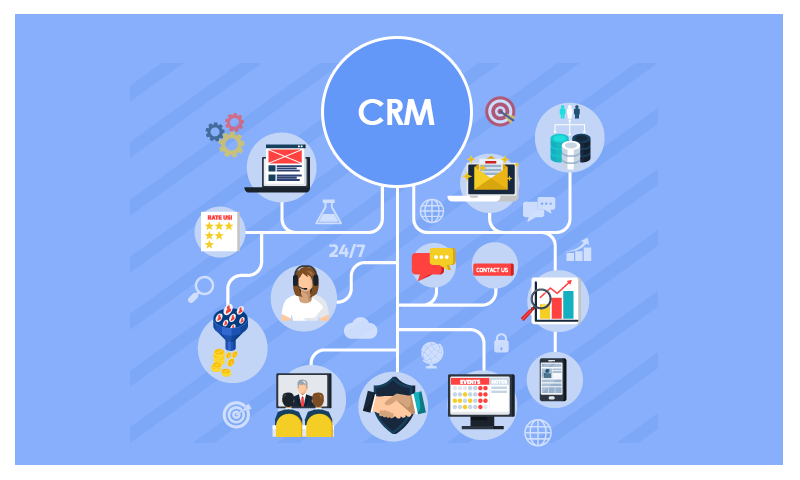NBFCs (Non-Banking Financial Companies) are constantly challenged to manage leads effectively, lower turnaround time, and enhance customer experience as the financial landscape evolves. With competition increasing and customer expectations rising, outdated ways of monitoring leads and tracking field sales will begin to show their limitations.
This is where a sales CRM for NBFC bank can bring change. A sales CRM framework can bring process, structure, visibility, and consistency to your day-to-day hiring of sales teams and will help them work more efficiently and respond more effectively. However, before we get into the good stuff, it is important to define what a sales CRM means while we are discussing NBFC operations.
What Is a Sales CRM for NBFC Bank?
A sales CRM, or Customer Relationship Management system, is an electronic platform that can help manage interactions with leads and customers across their lifecycle. When designed for NBFCs, a CRM can be even more than a sales tool—it can connect lead management, field operations, documentation, and reporting in one system.
From an NBFC perspective, a CRM can track potential borrowers from their first inquiry right through to final loan disbursal. It can record every interaction with a prospect, assign potential borrowers to a field executive, and prioritize lead follow-ups. More importantly, when integrated with a Lead Management App for NBFCs, a CRM can ensure timely follow-ups with the highest-value leads.
In the same way, a CRM also connects with a Field Sales Tracking App for NBFC, giving managers real-time visibility into the activities and productivity of field agents. This creates a more organized and measurable sales process.
Why Is a Sales CRM Essential for NBFC Operations?
One of the major challenges NBFCs face is managing a large volume of leads coming from different sources—branches, websites, call centers, and third-party channels. Without a structured system, leads are often duplicated, misplaced, or simply forgotten. This not only affects conversion rates but also damages the reputation of the institution.
A sales CRM for NBFC bank solves this by centralizing lead data and ensuring it is accessible to the right people at the right time. Every lead can be categorized, prioritized, and assigned to specific team members based on predefined rules. This minimizes delays and ensures that no opportunity is missed.
Another critical aspect is compliance and documentation. NBFCs operate under regulatory scrutiny, and maintaining a clean audit trail is non-negotiable. A CRM automatically logs every customer interaction, document upload, and approval step—ensuring transparency and traceability.
How Does a Sales CRM Improve Field and Lead Performance?
For NBFCs with a large on-ground workforce, field operations are at the heart of customer acquisition. Yet, without visibility into where agents are, how many clients they’ve visited, or what documents are pending, managers struggle to measure performance.
With the help of a Field Sales Tracking App for NBFC, integrated within the CRM, managers get live updates on location, completed tasks, and visit summaries. This helps optimize routes, identify underperforming areas, and ensure that field efforts are aligned with business goals.
Meanwhile, lead nurturing is handled seamlessly through the Lead Management App for NBFC, which sends reminders, follow-up alerts, and loan stage updates. Sales representatives don’t need to remember each lead status or next action—it’s all visible in one dashboard, making day-to-day follow-ups efficient and consistent.
What Are the Long-Term Gains?
The ramifications of their ongoing uptake of a sales CRM extend beyond the day-to-day, operational aspects of workspaces. It essentially changes how NBFCs think about their pathway to growth. With more visibility into the sales pipeline, senior management can move beyond gross targets and assign people in ways they can’t do presently.
For customers, it improved customer service. They get contacted sooner after loan submission, receive regular updates on their applications, and don’t need to repeat their details about history or application details. All of this translates into the customer experience, which we’ve found helps to build initial trust, which is so important to financial services.
From an internal point of view, a CRM adds standardization. Sales reps know exactly what sequence to follow, documentation teams will get competent complete files, and credit teams will operate on correct verified data. Those things combined, it results in a quicker loan approval cycle with fewer errors.
Even with audits or compliance, searches take less time if you have a singular system since everything is digital and recorded anyway. Each interaction is saved, so you aren’t “re-scanning” files because you are already in the system. It saves time and helps ensure you are always audit-ready.
Conclusion
NBFCs that still depend on manual tracking, independent spreadsheets, and unstructured communication may be struggling with scale, accuracy, and performance already. Adopting a sales CRM for NBFC bank is not just about digitizing your sales effort it’s about creating a more connected, informed, and responsive organization.
When combined with a Lead Management App for NBFC and a Field Sales Tracking App for NBFC too, a CRM really does become the central nervous system with the ability to guide all teams with clarity and intent.
If you’re looking to improve your NBFC’s lead conversion, reduce processing delays, and manage field operations more effectively, consider investing in loan lending software that is built to support end-to-end NBFC operations. The right digital foundation today can make all the difference in tomorrow’s growth.
